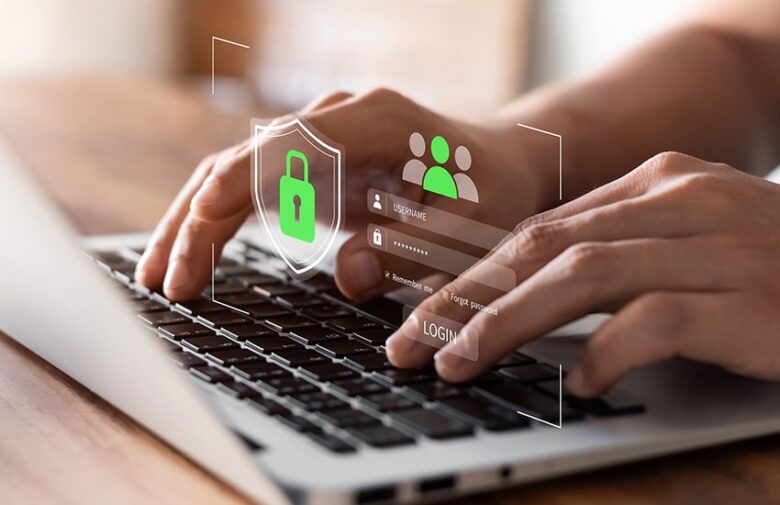Digital security is more important than ever in the modern workplace. As businesses increasingly rely on technology and the internet, they are more vulnerable to cyber risks such as data breaches, virus attacks, phishing, and insider threats. Maintaining trust and legal compliance requires protecting sensitive company, customer, and employee data. Digital security ensures that business operations run smoothly and protects a company’s brand and finances. Businesses that ignore digital security issues risk financial losses, legal penalties, and brand damage.
Create a Security Culture for Employees
A strong security culture is the foundation of digital security in the workplace. Employees are often the first to defend against cyberattacks. Training employees in security and regular training on how to identify and address threats can help reduce risk. Understanding their data security responsibilities can make employees more aware and proactive. Openly discussing security issues and reporting suspicious activity can create a safer workplace. A security-focused culture makes it easier to implement best practices across the company.
Strong Password Policies for Access Control
A strong password policy is one of the simplest and most effective solutions for digital security. The classic vulnerability for hackers is weak or overused passwords. Workplaces should use strong passwords that contain uppercase and lowercase letters, numbers, and special characters. Passwords should be changed regularly, and credentials should not be shared. Companies can improve security by using multi-factor authentication (MFA), which requires users to authenticate with SMS codes or authenticator apps. Strong access control measures can limit access to sensitive systems and data.
Workplace Security Devices
Today, employees use laptops, phones, tablets, and desktops. Every device can be a target for cyberattacks. Securing all devices is crucial. Enable firewalls, install anti-virus and anti-malware software, and update software and security measures regularly. Mobile devices should support remote wipe and encryption to prevent data loss or theft. A clear BYOD policy helps manage the risks associated with diverse technology use.
Data Protection with Encryption and Backups
Data protection is central to digital security. When sensitive data is encrypted, it cannot be read or misused by unauthorized parties. Both device and network data should be encrypted. Regularly backing up data can also protect against ransomware and accidental deletion. Keep backups securely stored in different locations, including offline or in the cloud. Backups and encryption help organizations recover quickly and limit losses after an incident.
Clear Policies for Email and Internet Use
Email and internet use are a cyber threat in the workplace. Phishing attacks target employees with fake emails with dangerous links or attachments. Clear restrictions on employee email and internet use can reduce the risk. These policies should teach employees how to recognize unknown emails, avoid unknown links, and report scams. Malware and phishing can be prevented by blocking malicious websites and filtering emails. Clear policies protect employees and company systems.
Use VPNs and Secure Networks
Many workplaces are hybrid or remote and rely more on Wi-Fi and the public internet. These networks are less secure and more vulnerable to hacker attacks. Securing office networks and encouraging remote workers to use VPNs can protect data in transit. Encrypting internet connections with VPNs makes eavesdropping and theft more difficult. Secure Wi-Fi access and limited network permissions for essential users can improve network security. Secure connections are required to protect confidential information and business operations.
Regularly Audit and Review Digital Security Systems
Digital systems need to be monitored and audited to ensure their security. Companies should use a Security Information and Event Management (SIEM) system to detect unusual activity or potential intrusions immediately. Regular audits can reveal exploitable vulnerabilities, misconfigurations, and outdated software. These assessments allow organizations to fix vulnerabilities before attackers do. Monitoring also ensures compliance with industry standards and regulatory requirements for security controls and documentation. A proactive approach allows digital security to adapt to new threats.
Comprehensive Incident Response Plan
Even with the best preventative measures, cyberattacks can happen in any workplace. A comprehensive crisis response plan can limit the damage and recover quickly. The plan should outline measures for detecting, containing, and eliminating security threats. It should outline team member responsibilities and internal and external communication protocols. Practice and update response plans based on lessons learned to ensure preparedness. An organized response can reduce downtime, protect sensitive data, and minimize financial and reputational damage.
Coordination between IT and Other Departments
IT is not the primary owner of digital security. A successful security program requires collaboration across the organization. HR, legal, and management must work together to align policies and meet requirements. Every employee must be aware of security issues and understand how their activities impact the business. Knowledge sharing, security coordination, and a coordinated approach improve digital security. Collaboration between departments improves workplace security.
Conclusion
Securing the digital workplace is a complex issue that requires awareness and proactive management. A security-focused culture, strong password and device security policies, data encryption, network monitoring, and incident preparedness protect companies from cyberattacks. Security must remain vigilant and adaptable as technology advances. Following these best practices protects corporate data, employee and customer privacy, and business continuity. Investing in digital security today will improve the security and reliability of tomorrow’s workplace.
FAQs
1. What is the difference between digital security and cybersecurity?
Digital security involves protecting digital information and systems, while cybersecurity protects network hardware, software, and data from cyberattacks.
2. Why is employee training crucial to workplace security?
Phishing and social engineering attacks by employees are common. Training employees to be alert to and respond to attacks can help reduce security breaches.
3. How often should passwords be changed in the workplace?
Employees should update their passwords every 60-90 days and not reuse them.
4. What should I do if I discover a security breach?
Report the incident to the IT or security team and follow the incident response strategy to prevent a catastrophic situation.
5. Are remote workers as safe as office workers?
VPNs, secure devices, reliable authentication, and clear rules and regulations can help ensure the cybersecurity of remote workers.




